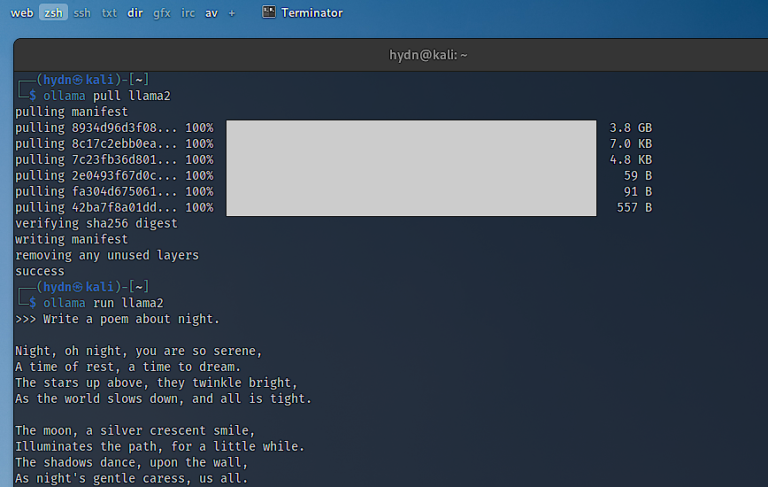
Cognitive Insights-as-a-Service (CIaaS) has emerged as a transformative model, enabling businesses to adopt AI-driven decision-making with unprecedented speed and simplicity. Several macro and microeconomic factors are contributing to its rise, pushing enterprises to move beyond traditional analytics toward real-time, contextual intelligence. Let’s explore the key drivers fueling this evolution.
Access through Pre-Built Intelligence and No-Code Interfaces
3. Hybrid Deployments with Edge Integration Catch On
What is Cognitive Insights-as-a-Service (CIaaS)?
These cognitive Insights-as-a-Service (CIaaS) platforms are intended to provide business users with machine learning and artificial intelligence, and contextual analytics in a manner that avoids traditional infrastructure deployment overhead or deep-seated technical expertise. The characteristics described below define the strength, ease of use, and scalability of the next generation of CIaaS platforms:
Cognitive Insights-as-a-Service is AI-powered next-generation analytics. CIaaS creates real-time, context-based insights out of large amounts of structured and unstructured data where and when they are needed, in contrast to business intelligence platforms whose reports are provided in predetermined form.
Powered by cloud data, CIaaS utilizes AWS, Azure, and Google Cloud platforms to deliver on-demand and elastic cognition capabilities. Native cloud deployment ensures stability, less time-to-market, and simpler integration with business platforms.
Key Drivers Behind the Rise of CIaaS
Here we define Cognitive Insights-as-a-Service and explain why it is increasing in adoption, its key features, what to watch out for in future developments, and real-world applications across sectors.
1. Codeless AI becomes increasingly common across the industry
Those who adopt CIaaS thus set themselves up to dominate the data economy of the future where every choice is a chance to outmaneuver the competition.
3. Cloud-Native Architecture
In 2025, CIaaS is shifting from standalone dashboards to in-the-app and in-the-flow embedding in enterprise apps and workflows. Whether it is salespeople with real-time deal suggestions in CRM or supply managers with alert-driven anomalies in supply chain apps, cognitive insights are getting surfaced where work is accomplished. It improves productivity and decision making by minimizing context switching and providing real-time, situation-aware answers. Embedded decision support is becoming a core aspiration of enterprise app design.
2. Lack of AI Proficient Talent
By Srinivas Chippagiri
Key attributes of CIaaS platforms
These services are fueled by the convergence of machine learning, natural language understanding, and predictive analytics. Machine learning can recognize patterns and trends in historical data, and natural language understanding enables systems to consume and interact with human language in contextual understanding. Predictive analytics takes these capabilities and uses them to predict and recommend based on historical and real-time inputs. All three technologies together turn big data into decision-enabling intelligence that is, not merely knowledge-filled information, but information that is actionable and enables organisations to make effective, timely decisions with minimal technical sophistication.
CIaaS integrates human capacity with machine learning (ML), predictive analytics, and natural language processing (NLP) to deliver real-time, context-based, and actionable insights. The insights go beyond traditional analyses to simulate human cognition in a bid to facilitate intelligent decision-making at scale.
Even with rapid AI uptake, 63% of companies don’t have AI talent according to McKinsey. CIaaS addresses this talent gap issue through a low-code and a no-code platform to allow business users, analytical experts, and domain experts to leverage AI-driven insights without data science capabilities.
Seamless Integration, Scalability, and Governance
Real-Time, Contextual, and Explainable Intelligence
Cognitive Insights-as-a-Service (CIaaS) is not on the horizon anymore but is already here, helping redefine what organisations value in data. Combining artificial intelligence, machine learning, and real-time analytics in elastic, simple-access form, CIaaS helps organisations make better, faster, and more informed decisions. Its ability to deliver contextual, actionable insights without demanding advanced technical proficiency makes it one of the key enablers of industry-wide data-driven responsiveness.
Created on cloud platforms, CIaaS platforms are designed to scale rapidly, integrate seamlessly and involve minimal coding. Most of these platforms offer plug-and-play layers of intelligence to deliver actionable intelligence in real-time without a wait time and complexity of customized AI.
Top CIaaS Trends to watch out for in 2025
Cloud-native CIaaS platforms are elastically scalable and natively integrate with enterprise environments. Organizations natively embed cognitive insights into existing dashboards, business apps, and workflows through APIs, webhooks, and pre-configured connectors. While robust security controls like encryption, role-based access controls, auditing, and compliance with applicable regulations (e.g., GDPR, HIPAA) protect the data and keep decisions in equilibrium.
The datasphere was over 120 zettabytes in 2023 and is projected to be 175 zettabytes in 2025. Business is bogged down in this flood of data. Everything about business results to customer activity. Discreet data is useless. CIaaS enables companies to take this raw data and, in real time, transform it into useful information to inform operational responsiveness and customer responsiveness.
With increasingly more companies faced with the imperative to innovate, personalize, and simplify operations, CIaaS is the vehicle to meet these imperatives with ease. With adoption trends like no-code, embedded intelligence, and hybrid edge deployments on the rise, decision making in the future will not be defined by intuition, but by smart, automatic, and explainable insights.
More significant among CIaaS characteristics is that it is able to produce contextual and actionable real-time insights. CIaaS platforms consume unstructured and structured sources of information—real-time feeds from IoT sources, from CRM or customer interactions, as examples—and produce responses in mere seconds. Even more important, the insights are context-aware and explainable, so users not only understand what is likely to happen, but also why. That sort of transparency lends credibility to AI recommendations, and enables quicker, data-driven decision-making across functions.
AI is in the process of democratizing with no-code and low-code CIaaS becoming the new standard in enterprise adoption. Data science teams are no longer required to build prediction models or extract insights from big data sets. Instead, business users across functions–HR and marketing, operations and finance–can deploy, configure, and run cognitive services with intuitive interfaces. This is driving quicker cycles of innovation, reducing the cost of implementation, and empowering cross-functional teams to harness the power of AI in decision making without any dependency.
1. Data explosion in digital ecosystems
The emerging Cognitive Insights-as-a-Service (CIaaS) based on artificial intelligence is bringing real-time data-driven decision-making to verticals through cloud-born scalable solutions and no-code platforms. Artificial intelligence (AI) has also gone beyond its novelty phase transforming companies all over the world. What was Alan Turing’s vision in 1950 about machines emulating human intelligence is a reality today. One of the most ground-breaking things in today’s AI environment is Cognitive Insights-as-a-Service (CIaaS) – the next-generation leap in cloud computing.
CIaaS platforms are designed to be easy to use by users with minimal deep-level technological skills. Business users can define workflows, enterprise integrations, and deployments of AI models from low-code or no-code visual and drag-drop environments. Industry-specific models in finance, healthcare, retail, and so on are integrated into pre-trained platforms so that rapid adoption and less custom programming are involved. CIaaS is distributing insightful information in everyone’s hands with less dependency on expert AI teams.
As edge computing pervades manufacturing, supply chains, and smart infrastructure, CIaaS platforms are emerging that offer hybrid model deployments. Organizations are implementing light-weight AI inference functions in the edge to support low-latency decision-making and cloud-based CIaaS to take advantage of heavy analytics and deep learning workloads. Hybrid approach provides quicker response in time-sensitive environments without sacrificing access to heavy cloud-based computing and storage. Combining edge intelligence and cloud-scale cognitive services introduces both speed and depth needs of industries that operate in distributed and time-sensitive environments.
2. In-Built Cognitive Intelligence in Business Procedures





